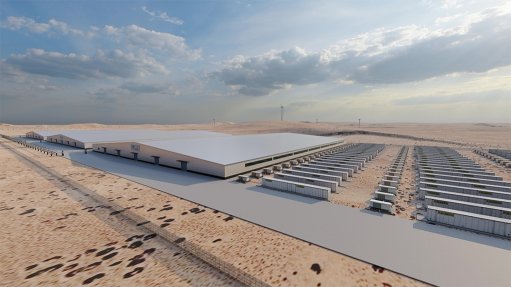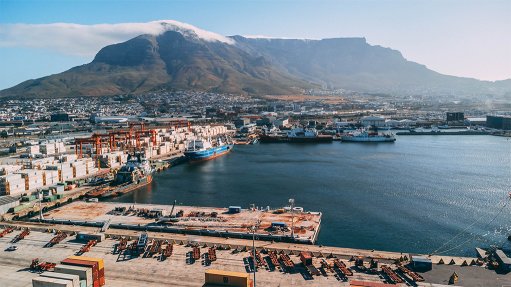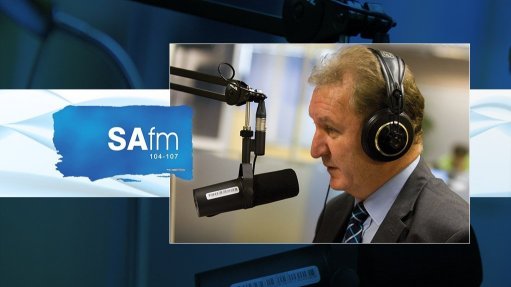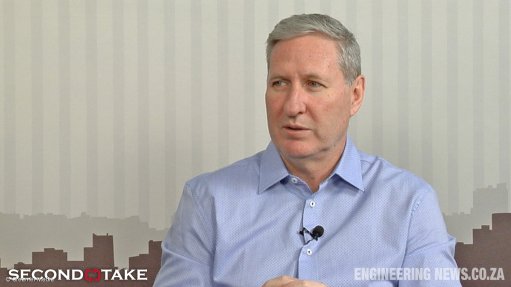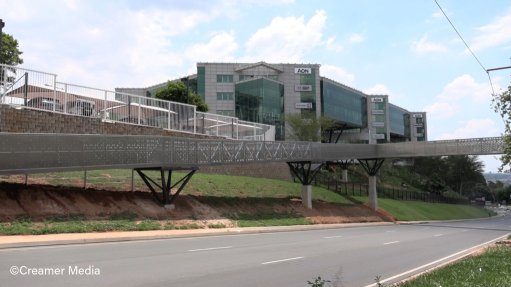Tax, policy gaps stand between automotive manufacturing goals and reality


Panelists explore what it will take to strengthen the country’s automotive value chains to stay globally competitive in a changing market.
TWIMS executive director Professor Justin Barnes
The South African Automotive Masterplan 2035 and the Automotive Production Development Programme (APDP) both aim to grow the local automotive manufacturing industry, but the country's vehicle tax structures and import duties do not support these plans.
South Africa's automotive policy includes tariffs, production incentives, volume assembly localisation allowances, an automotive investment scheme and a package of support for the industry, industry experts noted during the 'Strengthening South Africa’s Automotive Competitiveness' webinar hosted by Creamer Media on November 26.
By and large, it was a robust, well-considered and balanced policy; however, this narrow automotive policy sat within the broader policy framework, said manufacturing executive training organisation Toyota Wessels Institute for Manufacturing Studies executive director Professor Justin Barnes.
“Our vehicles are overtaxed. This is especially true at the lower price-segments. [South Africa] has a completely inverted market structure where our ad valorem tax is, compared with global standards, far too high for cheaper and middle-price vehicles. Whether you are driving a 4x4 or a Bugatti Veyron, your luxury tax is exactly the same. There is a structural problem in relation to the tax regime,” he said.
South Africa's automotive industry was overly dependent on distant export markets and these markets were responding to market and political forces.
This is a challenge for local manufacturers because they have to respond to a highly price-pressurised environment and a domestic market that is lagging in terms of automotive technology, while simultaneously meeting the onerous and rapidly shifting demand from these highly developed markets.
“We need a robust domestic market and need to make the regional market our operating environment.
“Failure to do this means we have to play in the global market space and sell into distant highly developed markets that are navigating a set of political and economic forces and technology forces that may not be appropriate for us, which makes the country, as a producer of vehicles, very vulnerable.”
The challenge was that the automotive masterplan emphasised, as the first two pillars of the South African masterplan, domestic market optimisation and regional market development, Barnes said.
Further, by the masterplan's endpoint of 2035, South Africa is supposed to be selling about 1.2-million vehicles in South Africa, of which 700 000 are made in South Africa and 500 000 are imported.
“We want serious volume-production in South Africa to deepen the value chain and increase localisation. The problem is that we have it the wrong way around. We are importing far more vehicles than we are making for the local market.”
The goal of the masterplan is for South Africa to manufacture 1.4-million vehicles a year, with 700 000 vehicles to be produced for the domestic market and 700 000 for export, of which 350 000 are supposed to be sold into Africa and the balance to developed markets.
South Africa has been producing about 700 000 vehicles a year for several years, although its automotive manufacturing capacity is 900 000 vehicles a year.
“The only target of these that we are likely to achieve is the 350 000 vehicles sold into developed markets and this is where the new-energy vehicle transition is happening and where the shift to vehicle autonomy is most likely to happen,” he emphasised.
However, with small policy changes, South Africa could rebalance what the domestic market was consuming. Additionally, if it worked on a partnership basis with neighbouring economies, the country could build regional value chains, Barnes stated.
If South Africa did this, it would unlock millions of additional units of opportunity regionally and this would change its entire geopolitical positioning as an automotive industry within the global value chain, he added.
TARIFFS AND TAXES
Meanwhile, South Africa's peer group of countries have much higher duty rates on completely built-up (CBU) imported vehicles. India has a 100% import duty rate for CBUs, Thailand has tariffs between 40% and 80% on CBUs and Brazil has a 40% duty rate on imported CBUs.
South Africa's CBU duty rate is 25%, which, using rebates, could be brought down to zero. Further, South Africa has a complete knock-down (CKD, or vehicles wholly built within the country they are sold) duty rate of 20%.
“The spread between these is too small. The consequence is that we do not have a sufficient gap between the assembly duty and the component duty.”
Original-equipment manufacturers (OEMs) are compensated through the rebate mechanism, but the problem is that the rebate mechanism is built on the value of production.
This means that assemblers of high-value vehicles that are focused on exporting could earn more rebates than they could use for every imported component they brought into South Africa.
These companies then monetise these rebates by selling them on.
This means that importers can use these rebates to discount their import duties, which makes these vehicles more competitively priced than those from the domestic market.
“The root cause lies with the low CBU duty rate; not the CKD duty rate. The problem is that automotive component manufacturers are not competing with a 20% CKD duty rate, but instead are competing against a 0% import duty rate.
“This means that, in the domestic market, component manufacturers are competing against duties at or close to 0%, which means they have to be extremely competitive to win contracts in the automotive manufacturing industry,” illustrated Barnes.
South Africa's automotive manufacturing sector was as sophisticated and advanced as any other globally, but the industries in other countries operated within healthy environments in which infrastructure and services operated effectively, he emphasised.
“We are equal to the best in the world in terms of factories, but we are far behind in terms of our operating environment. A key challenge that this has created is that, in terms of global value chains, South Africa tends to be positioned towards the margins and further from the core of value chains, which has significant consequences for the local sector.”
Additionally, a key challenge was that, as fewer locally made vehicles were sold into the domestic market, owing to the CKD duty rate on locally assembled vehicles exceeding the CBU duty rate of imports, and as more vehicles were sold into export markets, the protection afforded to the local industry under the APDP structure declined, he pointed out.
Further, South Africa's government is facing many conflicting requirements and demands and is fiscally constrained, which has resulted in a form of policy stasis.
The problem with stasis was that global automotive value chains were moving and changing very quickly. Not taking a decision did not buy more time to make decisions; instead it placed South Africa further behind the curve of where the value chain was moving to, he said.
“The masterplan is clear. We needed to optimise the domestic market and develop a regional market strategy. We have done neither and this exposes the local industry to these challenges.
“However, if these two elements (domestic and regional markets) can be fixed, even in a small way, with adjustments to policies, taxes and tariffs, there will be massive positive consequences for the industry,” said Barnes.
Article Enquiry
Email Article
Save Article
Feedback
To advertise email advertising@creamermedia.co.za or click here
Comments
Announcements
What's On
Subscribe to improve your user experience...
Option 1 (equivalent of R125 a month):
Receive a weekly copy of Creamer Media's Engineering News & Mining Weekly magazine
(print copy for those in South Africa and e-magazine for those outside of South Africa)
Receive daily email newsletters
Access to full search results
Access archive of magazine back copies
Access to Projects in Progress
Access to ONE Research Report of your choice in PDF format
Option 2 (equivalent of R375 a month):
All benefits from Option 1
PLUS
Access to Creamer Media's Research Channel Africa for ALL Research Reports, in PDF format, on various industrial and mining sectors
including Electricity; Water; Energy Transition; Hydrogen; Roads, Rail and Ports; Coal; Gold; Platinum; Battery Metals; etc.
Already a subscriber?
Forgotten your password?
Receive weekly copy of Creamer Media's Engineering News & Mining Weekly magazine (print copy for those in South Africa and e-magazine for those outside of South Africa)
➕
Recieve daily email newsletters
➕
Access to full search results
➕
Access archive of magazine back copies
➕
Access to Projects in Progress
➕
Access to ONE Research Report of your choice in PDF format
RESEARCH CHANNEL AFRICA
R4500 (equivalent of R375 a month)
SUBSCRIBEAll benefits from Option 1
➕
Access to Creamer Media's Research Channel Africa for ALL Research Reports on various industrial and mining sectors, in PDF format, including on:
Electricity
➕
Water
➕
Energy Transition
➕
Hydrogen
➕
Roads, Rail and Ports
➕
Coal
➕
Gold
➕
Platinum
➕
Battery Metals
➕
etc.
Receive all benefits from Option 1 or Option 2 delivered to numerous people at your company
➕
Multiple User names and Passwords for simultaneous log-ins
➕
Intranet integration access to all in your organisation








